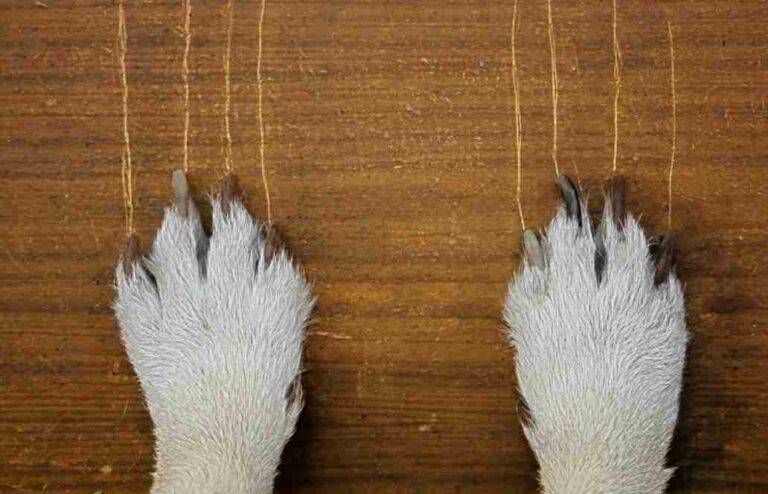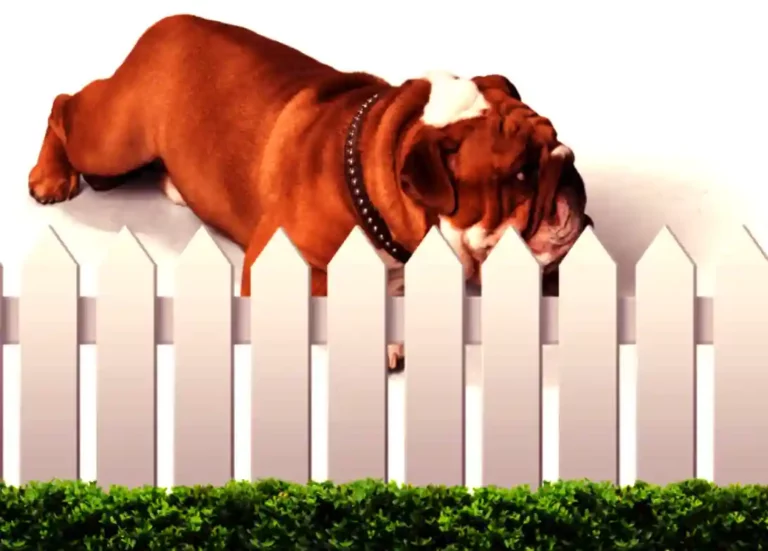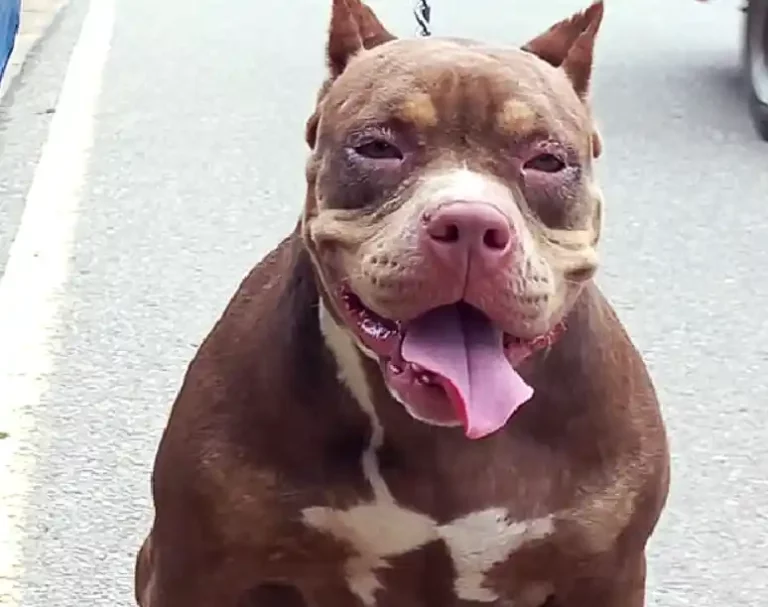Signs and Symptoms Of Aging Dog Behavior
Aging dog behavior differs from a young pup’s, and Dogs have a much shorter lifespan than humans. On average, most dogs live between 10-13 years, though some breeds, like Chihuahuas, average 15-20 years, and others, like Great Danes, average only 7-10 years.
When a dog’s health begins to decline in their senior years, usually after age 7, there are some common signs and symptoms to look out for that may indicate their life is ending. Being aware of the 12 most common signs can help you cherish your final days together and make the tough decisions that need to be made.

- Loss of appetite –
Your once food-motivated pup turning away tasty treats or meals could signify deteriorating health.
- Accidents in the house –
Bladder/bowel control loss may happen if your dog is too weak to go outside.
- Difficulty moving –
Stiffness, limping, or strained movement shows their joints are hurting and mobility is declining.
- Cloudy eyes –
A blue or gray haze forming over their eyes means cataracts develop and eyesight worsens.
- Confusion –
Disorientation, restlessness, or a dog getting stuck in corners shows their mental state is declining.
- Seeking isolation –
If your formerly social dog starts hiding under furniture or avoiding interaction, it may instinctively withdraw to be alone.
- Unexplained weight loss –
Sudden weight loss when not dieting likely stems from disease robbing them of vital nutrients.
- Heavy panting –
Labored breathing or panting at rest can indicate lung problems or heart failure.
- Coughing –
A new hacking cough may indicate congestive heart failure.
- Skin changes –
Bedsores, incontinence rashes, or dry/flaky skin from kidney disease can appear.
- Bad odor –
An unpleasant new odor may stem from infected tumors or internal issues.
- Lack of grooming –
Your dog stopping general self-care, like licking their coat, may demonstrate a lack of energy.
Noticing these changes in your senior dog doesn’t mean the end is near, but awareness can help you give them the best care in their final chapter. Show them extra love, keep them comfortable, and feel assured in knowing you shared a wonderful life when the time comes. How to Know if Your Dog’s Health is Declining?
Table of Contents
- Is it Dog Aged or Your Dog Dying?
- 12 Subtle Signs and Symptoms of Dog Health Failing
- 12 Clear Signs a Dog is Nearing the End of Life
- Understanding and Managing Your Dog’s Discomfort and Anxiety Near End of Life
- Conclusion
Is it Dog Aged or Your Dog Dying?
Aged dogs slow down, and their energy gets lower drastically. You notice they no longer devour their food with the same gusto or bound on walks with excitement. But how do you discern normal aging from signs that their health is failing?

Appetite loss, limited mobility, lack of interest in play, and other shifts from the norm may indicate declining health. A 2013 study by researchers at the University of Toronto found that dogs start to experience cognitive decline from 6 years onward. The study tested learning and memory in over 15,000 dogs aged 1 to 12.
If you contact a veterinarian, he will run diagnostic tests, like “bloodwork, heartbeat, and urinalysis,” to uncover whether it’s simply old age or an illness causing the changes. Conditions like kidney disease, cancer, and congestive heart failure often afflict elderly dogs. But something treatable, like a thyroid disorder, could also be the culprit.
Getting a professional opinion guides the next steps. If it’s an untreatable disease, you can offer palliative care to keep your dog comfortable at home until it’s time. The vet’s insights help you make the most loving decision for your four-legged family member.
With the vet’s help, you can discern when declining health signals just old age or the end of life approaching. Stay observant of changes and proactive with check-ups to treasure your remaining days together.
12 Subtle Signs and Symptoms of Dog Health Failing
You may notice health changes indicating your dog is uncomfortable, sick, or declining. Being attuned to subtle shifts from their normal behavior provides insight into their well-being.
While every dog ages differently, there are some common early signs of failing health to look out for:
- Lack of enthusiasm for favorite activities like treat time or walks
- Loss of bowel or bladder control in the house
- Disorientation or getting stuck in corners
- Uncharacteristic anxiety or restlessness at night
- Seeking more isolation from family members
- Changes in sleep patterns like excessive napping
- Less interest in playing with toys or other pets
- New tremors or difficulty standing up or climbing stairs
- Accidental falls or stumbling more frequently
- Changes in breathing patterns or new coughing fits
- Increased panting or signs of respiratory distress
- Lack of typical grooming habits
- Skin changes like unusual masses, dryness, or hair loss
In 2017, a study by the University of Washington measured changes in sleep patterns in senior dogs. They found that older dogs slept more during the day, woke up more at night, and had more fragmented sleep than younger adult dogs.
Noticing one or two symptoms may not mean the end is near. But if you see multiple or worsening signs, it could indicate your dog’s health is declining. Schedule a veterinarian visit promptly to diagnose and treat any underlying conditions for the best possible quality of life.
Drowsiness- Knowing if Your Dog’s Low Energy Signals a Serious Issue
Dogs like Greyhounds and Basset Hounds naturally lounge around more than others. But when an energetic breed suddenly becomes extremely lethargic, it can signal a worrying health change.
If your previously perky pooch stops wanting to go for walks or play and lies around all day, resist chalking it up to normal aging. Dramatic shifts in energy levels, especially accompanied by a loss of appetite or interest in favored activities, are red flags. Research from the University of Arizona in 2020 tracked activity levels in dogs as they aged. They found interest in play, toys, and training commands started decreasing around age 6. Walking and exercise endurance also declined.
A dog may appear too weak even to stand up or make it outside to go potty. If you notice a dog sleeping excessively and unable to move about, seek emergency veterinary care promptly. Time is of the essence if your pet’s lethargy stems from a condition like organ failure, infection, or poisoning.
If your dog is too weak to transport to the vet’s place, look for a vet that makes house calls. An at-home exam determines if your dog needs to be brought in for “X-rays, blood tests, or hospitalization.” Don’t try to wait it out and see if they improve independently.
Take action quickly when lethargy comes on suddenly – it can mean the difference between life and death for your beloved pet. Stay alert to changes in your dog’s regular vim and vigor.
Recognizing Appetite Changes

Appetite Changes can quickly be the highlight in the dog mealtime. So when your usually ravenous canine companion suddenly loses interest in food, take notice. An abrupt lack of appetite or refusal to eat can signal underlying illness.
A healthy dog that eagerly devours their dinner but turns up their nose at breakfast should still eat another meal later when hungry. However, consistent appetite loss over 2-3 days warrants attention. Attempting bland foods like boiled eggs, chicken, and rice could entice them, but don’t force food if they refuse.
Rapid weight loss, lethargy, vomiting, or diarrhea accompanying appetite changes further indicate deteriorating health. The body depletes itself without proper nutrition. Seek veterinary care within 48 hours if appetite remains poor or worsens.
Bloodwork, urinalysis, imaging, and other diagnostics uncover potential causes like kidney failure, cancer, oral pain, or gastrointestinal issues. Treating the underlying condition may help restore their appetite and energy.
Know your dog’s typical eating habits. Notice any deviation from their usual gusto at mealtimes. Try temping with particular foods, but look for other symptoms too. Only a vet can determine if it’s a tummy bug or something more serious. With close monitoring and prompt care, you can help your dog regain strength and the joy of mealtime.
Unexpectedly Weight Loss
Dogs can naturally lose some muscle tone and put on pounds as they age. Sudden or rapid weight loss in dogs might not be overlooked, and it can signal underlying illness.
Muscle mass and fat deposits diminish if your once energetic dog has lost interest in food and exercise. You may notice weight dropping off your pet’s frame and increased lethargy. This is concerning since appetite and energy are closely tied to health.
These changes often indicate your dog’s digestive organs are slowing down. Undiagnosed conditions like diabetes, cancer, kidney failure, or dental disease could prevent proper nutrient absorption. Weight loss progresses as the body starts shutting down.
Monitor your dog’s weight weekly – you should be able to feel their ribs without excess pressure. Note if they seem thinner over a 2-3 week timeframe. Bring this up promptly at your dog’s next veterinarian visit.
Diagnostic tests, blood panels, and imaging uncover any issues. With treatment of the underlying condition, your dog may start feeling hungry and active again. Pay close attention if your pet’s waistline seems smaller – it’s often one of the first visible clues that health is declining. Address it quickly to restore their appetite, energy, and well-being.
Declining Interest In Fun
Dogs thrive on playtime. But when your once energetic pup “stops chasing balls, squeaking their favorite chew toy, or participating in family play sessions,” take notice. Loss of interest in fun activities and interactions they relish can signal health issues.

If an older arthritic dog has some stiff joints slowing them down, that’s understandable. But a sudden disinterest in all forms of play, especially in younger dogs, is a red flag. Your high-energy buddy refusing to fetch or go on walks indicates they lack motivation and zeal.
As canine cognitive function declines with age, they may stop responding to verbal cues or physical touch. Letting you know when it’s time to eat or go outside can decline, too.
Vet exams help determine if it’s just old age or an illness altering their neurotransmitter balance.
Monitor changes in your dog’s typical enthusiasm and engagement over 2-3 weeks. Note specific activities they lose interest in and watch for other symptoms. Bring examples to your vet like, “Rover used to chase his ball for 30 minutes, now he won’t even squeak his favorite toy.” This level of detail aids diagnosis and treatment.
Dog’s Withdrawal from Social Interaction
Dogs are inherently social animals, so pay attention when your once people-loving pooch starts isolating themselves. If your dog is at the door corner, it could signal health issues.
Gradual withdrawal from social interaction over 2-3 weeks warrants a veterinary visit. Perhaps your aging dog’s eyesight or hearing is declining, making them uncomfortable around commotion. Or cognitive changes could be occurring. But, sudden antisocial behavior may indicate pain, depression, or neurological decline.
A Cornell University study in 2019 examined anxiety levels in senior dogs. They found dogs over the age of 8 years displayed more anxiety when exposed to loud noises or unfamiliar people than younger dogs. While it may seem your dog wishes to be alone, resist leaving them isolated in the final days.
After 10-15 years of companionship, your presence still comforts them. Place cozy beds in peaceful areas so they feel secure but near family activity.
Schedule exams to identify any treatable conditions impacting their sociability. “Medications, dietary changes, or therapy” can improve comfort and engagement. Stay attuned to their body language and responses – your dog relies on you honoring their needs while staying emotionally connected.
12 Clear Signs a Dog is Nearing the End of Life
Coping with a terminally ill pet is painful. But tuning into changes in their health helps you make the most loving decisions in their final stretch. Look for these 12 common signs that indicate a dog is nearing the end of life.
- Rapid weight loss –
Their body loses the ability to absorb nutrients as organs shut down. Muscle mass and fat diminish.
- Loss of appetite –
They lack interest in food and water as digestive functions decline.
- Extreme lethargy –
Due to organ failure, your dog may no longer have the energy to stand or hold up their head.
- Labored breathing –
Fluid accumulation in the lungs causes loud panting, gasping, or coughing. This indicates congestive heart failure or pneumonia.
- Loss of bowel control –
Weakened muscles mean your dog can’t make it outside to relieve themselves.
- Non-responsive –
Your dog no longer registers familiar voices or touch as cognition fades.
- Glazed eyes –
A grey-blue haze covers their eyes as cataracts form or vision fades.
- Collapse –
Your dog’s legs give out from under them, causing them to fall frequently.
- Unconsciousness –
Your dog slips into an unresponsive state and can’t be awakened.
- Refusal to eat treats –
Tempting foods are refused as your dog loses pleasure.
- Seeking isolation –
Your dog hides away instinctively as their health fails.
- Vocal distress –
Whimpering, groaning, or yelping can signal pain or distress.
Noticing these indicators means making the most loving choice for your dog’s comfort is nearing. Consult your vet on palliative care to ease any suffering at home. Staying attuned to your dog’s needs honors your enduring bond even when it is difficult.
Mobility Fades: Caring for Your Dog as Their Body Weakens

Watching your once energetic dog struggle with basic movements can feel disheartening. Giant breeds like Great Danes are prone to arthritis and joint issues that limit mobility in later years. Small dogs may also lose strength and coordination as their health declines.
A study from the University of Pennsylvania in 2021 found older dogs sought more affection and petting from owners as they aged. MRI scans showed the dogs found the affection rewarding due to age-related changes in the brain. Signs like stumbling when walking, collapsing, tremors, and inability to stand or climb indicate failing muscles and nerves. Your dog may appear unsteady, sway, or have difficulty rising to their feet – concerning changes from their normal gait.
If your dog loses mobility, provide padded bedding and rotate positions every 2 hours to prevent bedsores. Use harnesses to aid standing and gently massage sore joints. Ramps allow easier access outside. Check for injuries if they fall frequently.
Schedule a veterinary exam to identify treatable conditions and obtain pain medication that improves comfort. Physical therapy also strengthens muscles and stimulates nerve activity.
While the loss of mobility may seem like an inevitable part of aging, specific treatments can ease discomfort.
Muscle Tremors Can Signal Serious Illness in Dogs
A healthy dog’s gait appears coordinated and smooth. So muscle twitching, tremors, or loss of control in your dog’s legs or head warrants prompt veterinary attention. Neurological conditions like seizures commonly cause involuntary muscle movements. But tremors and shaking can also stem from poisoning.
Your dog may have ingested toxins like chocolate, xylitol, or compost, triggering tremors. Kidney disease, low blood sugar, calcium imbalance, or liver failure can also impair muscle function.
Note what precedes the tremors or uncoordinated motions. “Vomiting, diarrhea, weakness, or collapse” accompanying tremors point to acute poisoning. In comparison, gradual twitching may indicate organ failure or neurological disorders.
Seek emergency veterinary treatment if muscle control loss comes on suddenly. Diagnostic tests like bloodwork, urinalysis, and imaging uncover underlying causes. Addressing the condition quickly maximizes recovery chances.
Monitor your dog closely following any muscle control loss episode. Video captures a tremor episode to show your vet. Tracking duration, severity, and triggers help tailor treatment. Though unnerving, muscle tremors enlighten what’s happening inside your dog’s body.
Recognizing Dehydration Risk

Ensuring proper hydration is vital, even in your dog’s final days. As their health fades, your pet may lose interest in drinking water. Nausea, fatigue, or other issues can suppress their thirst.
Watch for signs of dehydration like lethargy, sunken eyes, dry gums, and skin tenting. If your dog hasn’t drank water in 48 hours, they risk kidney problems.
Try tempting them with low-sodium chicken broth, diluted beef or vegetable stock, or sugar-free electrolyte drinks. Canned food with 85% moisture content also provides hydration. Avoid xylitol sweeteners, which are toxic for dogs.
Use elevated bowls and silicone finger feeders to make drinking more comfortable. Seek veterinary advice if decreased thirst persists over 2-3 days.
IV fluids provide hydration if your dog is too weak to drink but not ready for euthanasia. Staying alert to changes in your dog’s water intake allows early intervention against dehydration. Your attentive caregiving keeps them comfortable – reminding them they are loved until the end.
Managing Bladder and Bowel Issues in Your Aging Dog
House soiling accidents in an otherwise house-trained dog can indicate health problems. In their senior years, kidney disease, diabetes, arthritis, and loss of mobility contribute to incontinence issues.
If your dog slept through the night but now has to urinate multiple times, bring a urine sample to the vet to check for infections or kidney dysfunction. Increased water consumption and difficulty urinating also warrant attention.
Look for signs like straining without results, bloody stool, or mucus for bowel incontinence. These indicate obstruction, inflammation, or loss of sphincter control. Check for fecal impaction if immobility is an issue.
Protect your floors with pee pads and waterproof bedding to manage accidents. Help your dog outside every 2-3 hours for potty breaks. Limit water before bedtime and gently squeeze their bladder to prompt urination.
Though frustrating, incontinence is manageable. Schedule veterinary exams to identify underlying causes early. Your dog can stay comfortable and dignified as they age with treatment and a caring routine.
Understanding and Managing Your Dog’s Discomfort and Anxiety Near End of Life

A once calm, content dog that suddenly seems restless merits investigation. Pacing, wandering, inability to get comfortable, and other anxious behaviors often indicate pain or neurological changes are occurring.
“Poor eyesight, altered sleep cycles, joint pain, and cognitive decline” contribute to agitation in elderly dogs. They may seem lost in familiar environments or fail to respond to redirection. Whining, trembling, and compulsive lip licking further signal distress.
Schedule a veterinary exam to identify treatable conditions like urinary infections causing discomfort. Pain relievers, anti-anxiety medication, or supplements like melatonin can provide relief when underlying issues are managed.
Ensure their resting areas are draft-free with soft bedding and avoid overstimulation. Frequent soothing touch and keeping familiar smells near settles anxious dogs. Though difficult to witness, restlessness communicates your dog’s needs. Your beloved companion can depart peacefully with attentive comfort and care in their final days, knowing they were cherished until the end.
Dog Discomfort – Recognizing and Managing Pain in Your Dog
Seeing your dog in pain is agonizing. Watch for signs like sensitivity to touch, increased vocalization, aggression, trembling, and excessive self-grooming. These all indicate discomfort.
Your once affectionate buddy withdrawing from touch or snapping when moved signals their nerves are on edge. Yelping, whining, or growling communicates distress. Constant licking of a particular area can mean injury or inflammation.
Schedule a veterinary exam to identify pain sources and obtain medication to ease your dog’s suffering. Joint supplements, steroids, opioids, and NSAIDs help depending on the diagnosis. Therapies like acupuncture, laser treatment, or hydrotherapy may also relieve pain.
Ensure their resting spaces have ample cushioning and avoid manipulating sore areas. Massage, stretching, and gentle handling keep them calm. While challenging, tuning into pain cues guides you in maximizing their comfort until the end.
Supporting Respiratory Distress: Caring for Your Dog’s Labored Breathing in Their Final Days
Few things are as concerning as watching your dog struggle to breathe. Observing significant deviations from standard respiratory patterns, such as panting, loud wheezing, coughing, or gagging, indicates potential distress in individuals.
Your dog may extend their neck or keep their elbows broad to maximize airflow. They may appear unable to settle comfortably lying down. Even minor exertion walking across a room may leave them gasping.
Labored, rapid breathing indicates fluid accumulation in the lungs, pneumonia, or heart failure, compromising oxygen flow. Schedule a veterinary exam promptly to obtain medications to ease their air hunger.
Keep your dog resting in cool, fresh air. Use harness slings to prevent overexertion. Administer prescribed diuretics to reduce fluid buildup. Your attentive efforts ensure every breath doesn’t feel like a struggle.
Stay observant of your dog’s respiratory patterns – changes illuminate how to comfort them best.
Gums Grow Pale: Understanding the Significance of Gum Color Changes in Sick Dogs
Regularly checking your dog’s gums provides vital health insights. Healthy pink gums indicate average circulation and hydration. But discoloration like “blue, white, or extremely pale” gums signals underlying issues.
Gum color correlates with blood oxygen levels. A blue or purple hue, especially around the edges, means your dog’s blood lacks adequate oxygen. This signals possible respiratory distress or heart failure.
Pale gums often accompany dehydration, anemia, blood loss, or shock. Press your finger gently – the blood should return within 2 seconds. Slow capillary refill indicates poor perfusion and circulation.
Note gum color changes and bring your dog to the veterinarian promptly. Discoloration provides clues to guide diagnosis and treatment to restore vascular function. With attentive care, gum color can return to a healthy pink.
Make gum checks part of your periodic health examinations. Subtle shifts from pink provide an early warning something serious is developing internally.
Keeping Them Warm – Managing Body Temperature Changes in Your Dog
Dog’s Average body temperature ranges between 100-102°F (37.8° – 39°C). But as their health declines, you may notice their body feeling cool or cold to the touch.
Inadequate calorie intake, decreased metabolism, and reduced fat stores leave dogs more prone to hypothermia. Organ failure and low blood pressure also impair circulation, inhibiting warmth.
Check your dog’s ear with a thermometer. Temperatures below 99°F warrant attention. Move them off cold floors and provide cozy orthopedic beds with soft blankets. Cover them with sweaters or jackets when lying down.
Avoid drafts, keep indoor temperatures around 75°F (23.5 °C), and use heating pads or microwavable discs to warm gently. Check for hypothermia if they shiver, whine, or seek warmth. Alert your vet if their temperature drops below 97°F (36.0°C).
Your dog can stay warm and content with attentive monitoring and care even as their health fades. Your diligence provides comforting nourishment right up until the end.
Conclusion
When dogs age, they react differently, like laziness, sleepiness, and tiredness. If you have an aged dog, you might give special attention to them. Age dogs have many signs and symptoms of health issues, which you can quickly identify.
Always use Vet advice and follow his treatment instructions. Keep calm and arrange a peaceful death for your dog.






